It was still 2003, September, and Purple Hibiscus had not even come out. She had just won another prize for what is, perhaps, her greatest ever short story. But her victory’s highlight, in retrospect, was not her winning but what happened after she won. Writing in The ScoopNG, James Eze recounts what Obi Iwuanyanwu, professor at Central State University, Dayton, Ohio, said. “Given my knowledge of similar astounding young writers in history, I would make bold to describe her as a genius,” he announced. “I believe that Chimamanda, who was born seven years after Biafra, is destined to write the Great Biafran Novel.” That prize, the David T.K. Wong Prize for Short Fiction, is since defunct but that short story, “Half of a Yellow Sun,” remains fierce and effervescent, tender and steeped in wisdom—alive in every personified sense of the word. The following month, October, Purple Hibiscus was published by a then small press, Algonquin Books.
When, exactly three years later in September of 2006, Half of a Yellow Sun came out with a rare blurb by the most revered writer in modern African literature, the late Chinua Achebe, Adichie and her new publishers, Alfred A. Knopf, were poised for critical and commercial applause.
“We do not usually associate wisdom with beginners,” writes Achebe, “but here is a new writer endowed with the gift of ancient storytellers. [She] knows what is at stake, and what to do about it. Her experimentation with the dual mandate of English and Igbo in perennial discourse is a case in point. Timid and less competent writers would avoid the complication altogether, but [she] embraces it because her story needs it. She is fearless, or would not have taken on the intimidating horror of Nigeria’s civil war. Adichie came almost fully made.”
It did not matter that she was personally uncertain, that she wondered whether people outside Nigeria would really be interested in reading about a war that happened in the sixties. Within a few months, Half of a Yellow Sun had entrenched her relevance. Publishers Weekly called the novel “a searing history lesson in fictional form,” one “captured in haunting intimacy.” Comparing her to Nadine Gordimer, The New York Times termed it “at once historical and eerily current”, with “an empathetic tone that never succumbs to the simplifying impulses, heroic or demonic, of advocacy literature.” Time called it “a gorgeous, pitiless account of love, violence and betrayal.” The Washington Post Book World, which had earlier with the publication of Purple Hibiscus described her as “the twenty-first century daughter of Chinua Achebe,” called it “transcendent” and “impossible to forget.” The Guardian called it “a landmark novel” of “rare emotional truth” and “a heart-felt plea for memory” written with “lucid intelligence.” The Observer called it “immense.” San Antonio Express-News called it “alluring and revelatory, eloquent.” The Seattle Times called it “sweeping” and “engagingly human.” And sometime later, amidst all the praise, in a 2009 article on the best books of the decade, The Guardian again called it “the first great African novel of twenty-first century.” Drawing equally effusive acclaim back home in Nigeria, the novel began to take on practical proportions: it began to re-boot, among young people particularly, hushed conversations surrounding the Civil War of 1967-70.
Writing the novel was a personal journey for Adichie. Her maternal and paternal grandfathers were lost to the war, as refugees fleeing Federal troops. “I grew up in the shadow of Biafra,” she writes in a post-story section of her book aptly titled “The Story behind the Book.” “It was as if the war had somehow divided the memories of my family.” She wanted “not only to honor my grandfathers, but also to honor the collective memory of an entire nation.” Later she writes: “[My parents] have always wanted me to know, I think, that what matters is not what they went through but that they survived.” She is quoted as saying that she primarily wanted two men to read the book when it was done, to ascertain whether she had done the war generation justice: her father Professor James Adichie and Chinua Achebe. “I was concerned about people who lived in Biafra, telling their story in a way that gave it dignity and that is true.”
It soon became ubiquitous, this question: How, at the age of twenty-nine, did she do it? “I read books. I looked at photos,” she says in the book’s interview section. “In the four years that it took to finish the book, I would often ask older people I met, ‘Where were you in 1967?’ and then take it from there.” While her parents’ and relatives’ stories formed the skeleton of her narrative, she went on to do a massive personal research, “the kind of research one does for a PhD.” But in the end she didn’t use most of it, aware of the danger of politics overwhelming the human story. Her aim in the novel was to capture emotional truth: a thing rarely pre-known except when felt. When, on completing the first draft, it was full of political events aimed at recreating the grand climate of international politics, she pruned it, sieved it, cutting and re-writing until it became the character-driven story that it is. So much that we only learn aspects of the war through the way they filter down to affect the characters. Rob Nixon captures this when he writes that the novel “takes us inside ordinary lives laid waste by the all too ordinary unraveling of nation states.” Taking advantage of the freedom that fiction offered, she did not exactly stick to geographical and chronological facts. To suit the story, she re-arranged things: from subtle changes like the distance between towns and the presence of a beach in Port-Harcourt and a train station in Nsukka to not-so-overlookable ones like the chronology of conquered cities.
To temper the ravaging war she so visually depicts is ravishing love, and together she weaves them into that kind of balance that supports the greatest of art works. “I wrote this novel because I wanted to write about love and war,” she often says. In a 2013 interview, she tells Ellah Allfrey: “I want people to read this book and come away thinking what it means to be human.”
But more than just its subject-matter, there are many other things that make it a readers’ favorite: the prose, the narration, the descriptions, the to-and-fro plotting, the characterization. Purple Hibiscus had introduced readers to a kind of prose different from the Achebe-Ngugi style that bestrode literature from Africa. Visual prose that drew ideology and methodology from Achebe and Ngugi but, in its willingness to be lyrical, defiantly sits nearer Tsitsi Danganremgba and Dambudzo Marechera, sitting there and stubbornly facing the South Asians—Kiran Desai, Jhumpa Lahiri, Arundhati Roy, Rohinton Mistry. But what Half of a Yellow Sun does is to temper the obsession with the Seen with a heightened indulgence in the Smelt and the Felt to produce an even more powerful pull of language: one that nails both itself and the scenes it captures into the reader’s brain, a radiant balance of long and short sentences that glides gracefully across pages.
From the first page, we see Nsukka, smell and feel it (“a little patch of dust in the middle of the bush”). We see and smell and feel the opulence of privileged Lagos, the cool and swift life and Atlantic Ocean view of Port-Harcourt until the war (“Port-Harcourt is going crazy”), the tender, almost serenaded life in pre-massacre Kano (“the sand was fine, grey, and sun-seared…miles of flatland went on and on…until they seemed to meet with the silver-and-white sky”, “Kano: this lucid peace”). Ugwu, the story’s glue, is so well-realized in his dedication and occasional mischievousness (“My name is not Sah. Call me Odenigbo”—“Yes, sah—Odenigbo”). Olanna’s beauty is so visual it is almost real, her thinking as clear (“She wished she were fluent in Hausa and Yoruba…something she would gladly exchange her French and Latin for”), balanced only by Kainene’s mix of charm, sarcasm and prescience (“It’s the oil…They can’t let us go easily with all that oil”). Mohammed’s handsomeness and, most importantly, his open-mindedness, comes across as near-mythical (“I would eat my hair if you did not marry him. I have never seen a more handsome man”, “his tall, slim body and tapering fingers spoke of fragility, tenderness”). In a parallel world, Odenigbo might be living his solid Mathematician life in a vibrant university, a man “who trusted the eccentricity that was his personality,” “not particularly attractive but who would draw the most attention in a room full of attractive men.” Every character is memorable, their collective intellectualism robust. Their weaknesses clear—Odenigbo, Olanna and Richard’s fall to infidelity, for example—but their dignity intact, so much that it is frequently forgotten that there is one person seemingly without guile in the story: Mohammed. In the brutal rape scene involving Ugwu, one of the most powerful in a book full of powerful scenes, the novel underlines its aim: to argue, without vilifying, that the suffering during the war was as a result of inhuman decisions by both sides.
In 2007, Half of a Yellow Sun was an awards season bride. It was named winner of the Anisfield-Wolf Book Award, the PEN “Beyond Margins” Award, a New York Public Library Book Award, and, in June of that year, mopped up the Orange Broadband Prize for Fiction. The novel was a further finalist for the 2006 National Book Critics Circle Award, the 2007 Commonwealth Best Book Prize for Africa Region, the 2007 James Tait Black Memorial Prize, the 2007 British Book Awards: Richard & Judy Best Read of the Year; and was longlisted, in 2008, for the International IMPAC Dublin Award. It also made The New York Times’ 100 Most Notable Books of the Year 2006. However, it was in 2015, nine years after publication, that the most defining accolades began to arrive. In January, it placed at Number 10 in BBC Culture’s list of the Greatest Novels of the 21st Century So Far, with Americanah at Number 13 and Junot Diaz’ The Brief Wondrous Life of Oscar Wao topping the list. In February, to mark the 20th anniversary of The Independent Bath Literature Festival, a panel of experts compiled a list of The 20 Best Books From The Past 20 Years and declared Half of a Yellow Sun the Best Book of 2007, with Hilary Mantel’s Wolf Hall, their Best Book of 2010, deemed the best novel of the last two decades. And in November, the former Orange Prize, now the Baileys Women’s Prize for Fiction, named the novel its Best of the Best winner among the ten Bailey Prize winners of the 2006-15 decade.
The novel also proved a heavyweight bestseller. The Bookseller listed it in their Hot 100 Paperback list for 2007, reporting its sales of 385,000 copies that year alone. In 2010, Nielsen BookScan reported that its sales stood at 525,438, making it one of the three Orange Prize-winning novels to have outsold every single Booker Prize-winning novel of the present century with the exception of Yann Martel’s million-selling Life of Pi (published 2002). The other two Orange bestsellers are Andrea Levy’s Small Island (published 2004, with 2010 sales at 834,958) and Lionel Shriver’s We Need to Talk about Kelvin (published 2005, with 2010 sales at 646,373), and all three novels still retain their ranking. The most recent figures are from a 2013 Channel4 report which puts HOAYS’ sales at 800,000, with translations into 35 languages. It would not be surprising if, in the near future—in months—HOAYS reaches the one million mark.
The movie adaptation solidified Half of a Yellow Sun’s place in popular culture conversation. Adichie stayed away from its production: “The thought that I would have to somehow oversee the chopping up and taking out of large chunks of something that I had spent the last six years of my life slaving on, I thought it would be very difficult.” She had given one condition, though: that it be shot in Nigeria, and it was, in Calabar. With its record budget for a Nollywood production and an unimpeachable cast (Thandie Newton, Chiwetel Ejiofor, Genevieve Nnaji, John Boyega, Anika Rose-Noni, Joseph Mawle, Onyeka Onwelu) helmed by director Biyi Bandele who himself has written a war novel Burma Boy, the natural result was the most high-profile film in Nigerian cinematic history.
But HOAYS—the short story and the novel—was not her first foray into the Biafran War. Before and aside HOAYS she had written short stories (“That Harmattan Morning”, a 2002 BBC Short Story Competition winner, and “Ghosts,” a highlight of her The Thing Around Your Neck collection), a play (For the Love of Biafra, 1998), and poetry (from her collection Decisions, 1997), all of which deal with the war in different ways. “I want to engage with my history in order to make sense of the present,” she writes. “Many issues that led to the war remain unresolved in Nigeria today.” For a writer who tackles broad subjects unsparingly and unsentimentally, it is only natural that she continues to prod a hitherto largely silenced issue in Nigeria. Like most people now willing to discuss the war, to re-examine details long earthed, Adichie is young and holds a logical view as to why it is the young rather than the old who are having the conversation.
“I think this is what happens for a generation that experiences trauma, that usually, it’s the next generation who can start to talk about it,” she said. “I don’t think I could have written this book if I had lived in Biafra.” However, in a post-story page of the book, she grants us a view of her research material, most of which are written by people who lived through the war: most notably Achebe’s Girls at War, Adewale Ademoyega’s Why We Struck, Alexander Madiebo’s The Nigerian Revolution and the Biafran War, Wole Soyinka’s The Man Died, Chukwuemeka Ike’s Sunset at Dawn, Flora Nwapa’s Never Again, Elechi Amadi’s Sunset in Biafra. For a country refusing to prioritize the study of History (despite a recent announcement returning it to curricula) due to hypocrisy, a shame and fear of confronting its past, it is no wonder that none of these books is compulsory reading in secondary schools. Adichie herself captures the Nigerian nation’s attitude when she says that “Biafra is a topic we enjoy avoiding.”
Joyce Carol Oates describes the novel as “a worthy successor to such twentieth-century classics as Things Fall Apart and [V.S. Naipaul’s] A Bend in the River.” The American novelist, Dave Eggers, categorizes it in similar but even more elevated terms, as having “the scope and breadth of Tolstoy, or Chekhov, Edward P. Jones or even Steinbeck,” with stress on how Adichie possesses “the kind of unwavering command of history and humanity that puts her in that company.”
Time would, in its remarkable way, sort out where Half of a Yellow Sun truly belongs, this book that can only grow in relevance and would, irrespective of whatever classic we are blessed with yet again, remain a uniquely incandescent addition to the canon of global literature.
**********
About the Author:
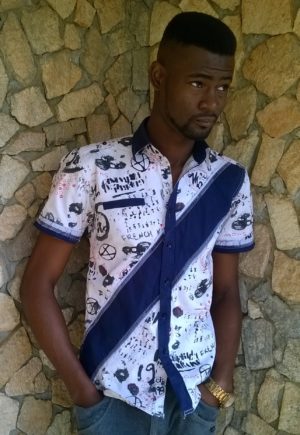 Otosirieze Obi-Young is a historian and literary critic. He attended the University of Nigeria, Nsukka. His fiction has appeared in The Threepenny Review, Transition, and Interdisciplinary Academic Essays. His story, “A Tenderer Blessing”, was nominated for a 2015 Pushcart Prize. An artist and street photographer, he blogs popular culture at naijakulture.com.
Otosirieze Obi-Young is a historian and literary critic. He attended the University of Nigeria, Nsukka. His fiction has appeared in The Threepenny Review, Transition, and Interdisciplinary Academic Essays. His story, “A Tenderer Blessing”, was nominated for a 2015 Pushcart Prize. An artist and street photographer, he blogs popular culture at naijakulture.com.


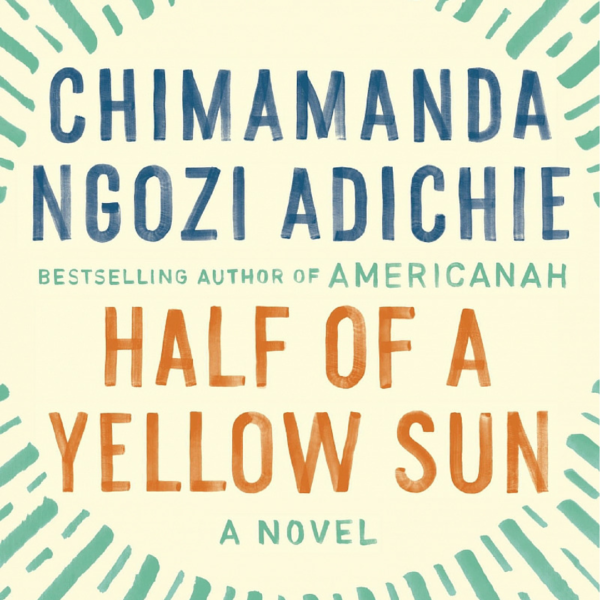



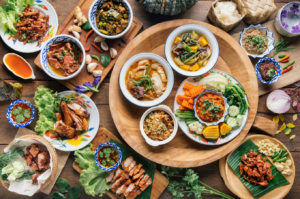
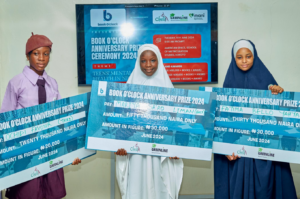
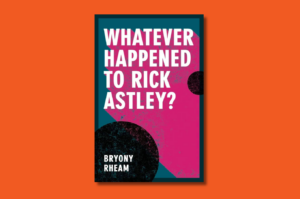

http://www.foresthillsgolf.net/ February 15, 2017 11:01
It's good to see someone thinking it through.